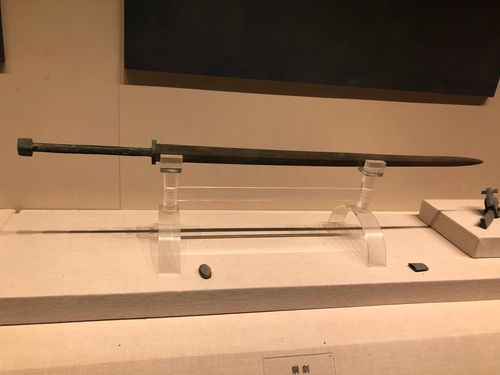
What Were the Terracotta Army's Weapons Made Of?
The Terracotta Army pits have yielded almost 40,000 bronze weapons, a testament to the military might of the Qin dynasty. These weapons are not merely ceremonial replicas; many show signs of actual use on the battlefield. But what materials did the ancient Chinese use to equip their terracotta legions?
Bronze: The Material of Choice
The vast majority of the Terracotta Army's weapons were crafted from bronze, an alloy of copper and tin. Here's why bronze was the dominant material:
- Abundance: China possessed ample copper and tin resources, making bronze relatively accessible.
- Casting Suitability: Bronze is easily cast into intricate shapes, ideal for crafting detailed weapons.
- Durability: Bronze resists corrosion better than iron, especially in the damp conditions of the pits.
The bronze weapons weren't uniform in composition. They varied in the ratio of copper to tin, likely to achieve desired properties:
- Higher Tin Content: Made the bronze harder and sharper, suitable for blades.
- Lower Tin Content: Produced a more malleable bronze, ideal for arrowheads.
The Weaponry Arsenal
The bronze arsenal unearthed alongside the Terracotta Army is astonishingly diverse, encompassing:
- Swords: Varying in length, some with chrome plating to prevent rust.
- Spears: Long shafts tipped with lethal bronze heads, some designed for thrusting, others for throwing.
- Billhooks: Versatile weapons combining a hooked blade with a spear point, effective for both infantry and cavalry combat.
- Arrowheads: Thousands discovered, highlighting the importance of ranged warfare. The arrowheads exhibit diverse shapes, optimized for piercing armor or inflicting maximum damage.
- Crossbows: Sophisticated for their time, these ranged weapons were powerful and accurate, capable of piercing armor.
Iron: A Rarity
Although far less common than bronze, a small number of iron weapons have been found among the Terracotta Army. Iron offered distinct advantages:
- Strength: Iron is inherently stronger than bronze.
- Sharper Edge: Iron can hold a finer edge than bronze, making it ideal for cutting weapons.
However, early iron production in China was limited by:
- Higher Melting Point: Smelting iron requires significantly higher temperatures than bronze.
- Rust Susceptibility: Iron is prone to rust, making preservation challenging.
The presence of iron weapons, though rare, indicates that ironworking technology was emerging during the Qin dynasty.
FAQs
Q: Are the Terracotta Army's weapons still sharp? A: While many of the weapons were coated in a protective layer of chromium, centuries underground have taken their toll. Some weapons retain a surprising degree of sharpness, but they are all treated with utmost care by archaeologists.
Q: Why are the weapons in such good condition? A: The bronze weapons have survived remarkably well due to the favorable conditions within the pits. The high tin content in the bronze helped prevent corrosion, and the airtight clay soil minimized exposure to oxygen and moisture.
Q: Were the weapons ever used in battle? A: Although found in a funerary context, many of the weapons bear signs of use—nicks, scratches, and even repairs. This suggests they may have seen action on the battlefield before being interred with the Terracotta Army.